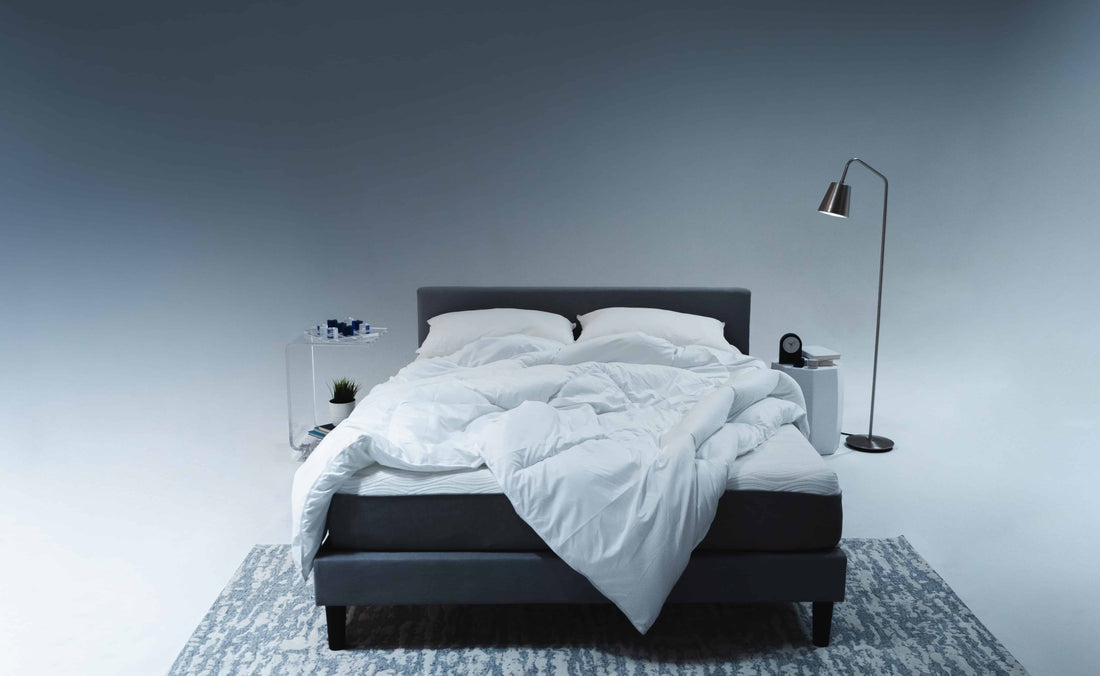
Can Red Light Help You Sleep Better?
Share
Blue light disrupts sleep by suppressing melatonin, while red light supports natural sleep cycles by being less disruptive and potentially boosting melatonin production.
Practical tips include using red light bulbs, enabling red light filters on devices, and wearing blue-light-blocking glasses to create a sleep-friendly environment.
Getting a good night’s sleep is one of the best things you can do for your health. But in our modern world, it can be hard to unwind and drift off. One thing that often gets in the way is the light from our screens. You’ve probably heard about blue light, but what about red light? We’re here to break down how different types of light affect your sleep and how you can use red light to improve your nightly rest.
The Problem with Blue Light at Night
Before we talk about red light, let’s quickly touch on blue light. Most of our electronic devices, like smartphones, tablets, and computers, emit blue light. During the day, blue light from the sun helps us feel awake and alert. However, exposure to it at night can disrupt our natural sleep-wake cycle.
Your body produces a hormone called melatonin to signal that it's time to sleep. Blue light suppresses melatonin production, tricking your brain into thinking it’s still daytime. This can make it harder to fall asleep and reduce the quality of your rest. This is why many sleep experts recommend limiting screen time before bed.
Why Red Light is Different
Unlike blue light, red light has a longer wavelength and is less disruptive to our internal clock. Research suggests that red light does not suppress melatonin in the same way blue light does. This makes it a much better choice for evening lighting as you prepare for bed.
Think of it like a sunset. The warm, red and orange hues of a setting sun are nature's way of signaling to our bodies that the day is ending and it's time to wind down. By using red light in the evening, you can mimic this natural process and support your body’s transition into sleep mode.
The Benefits of Using Red Light for Sleep
Shifting to red light in the hours before you go to bed can have several positive effects on your sleep.
1. Supports Melatonin Production
The primary benefit is that red light doesn't interfere with your body's melatonin production. When your melatonin levels rise naturally, you’ll start to feel sleepy at the right time, making it easier to fall asleep and stay asleep.
2. Creates a Relaxing Environment
The warm glow of red light can help create a calming and soothing atmosphere in your bedroom. This relaxing environment can signal to your mind and body that it's time to relax, helping to reduce stress and prepare you for a peaceful night.
3. May Improve Sleep Quality
Some studies suggest that exposure to red light therapy could potentially increase sleep quality and duration. While more research is needed, the existing evidence is promising. By helping you fall asleep faster and promoting a more restful state, red light can contribute to a more rejuvenating night's sleep.
Easy Ways to Add Red Light to Your Routine
Incorporating red light into your evening is simple. Here are a few practical tips you can try tonight.
Use Red Light Bulbs
One of the easiest ways to get started is by swapping out the regular lightbulbs in your bedroom or reading lamps. You can find red light bulbs online or at many hardware stores. Use them for an hour or two before you plan to go to sleep to help your body wind down.
Turn Your iPhone Screen Red
Did you know you can change your iPhone screen to a red hue? This handy feature makes it less disruptive if you need to use your phone before bed. Biohacker Gary Brecka shared this popular tip to help people improve their sleep.
Here’s how you can set it up on your iPhone:
- Go to Settings > Accessibility > Display & Text Size.
- Scroll down and tap on Color Filters.
- Toggle Color Filters on.
- Select Color Tint as the filter.
- Slide the Intensity and Hue sliders all the way to the right. Your screen should now have a red overlay.
To make this easier to turn on and off, you can create a shortcut:
- Go back to Accessibility settings.
- Scroll to the bottom and tap Accessibility Shortcut.
- Select Color Filters.
Now, you can triple-click the side button on your iPhone to quickly switch the red filter on and off.
Wear Blue-Light-Blocking Glasses
If changing bulbs or phone settings isn’t for you, consider a pair of blue-light-blocking glasses. Many of these glasses have amber or red-tinted lenses that filter out disruptive blue light. Wear them for a couple of hours before bed to help your body prepare for sleep, even if you’re watching TV or looking at a screen.
Better Sleep is Within Reach
Choosing the right mattress and pillows is crucial for a good night’s sleep, but creating the right environment is just as important. By understanding how light affects your body, you can make small changes that lead to big improvements in your sleep quality. Swapping blue light for red light in the evening is a simple, effective step towards more restful nights.
Take the first step towards better sleep today. Explore Sure2Sleep's range of made-in-the-USA mattresses, mattress toppers, and pillows. All are delivered directly to your door so you can experience the ultimate in comfort.
What sources are cited in this article?

Hannah Lake
Sleeps on a mattress every night. Loves a foam pillow (emotional support pillow). Has been a student of the foam industry for years. Dedicated to getting a solid 6-8 hours of rest every night before writing about foam. Passionate about helping others do the same.


